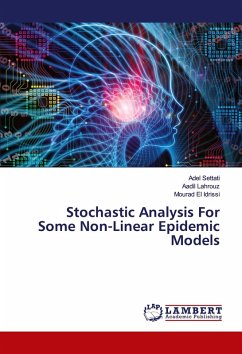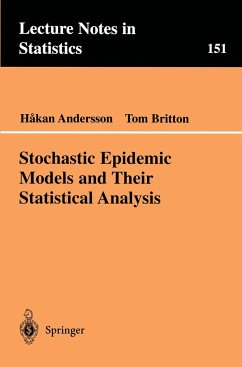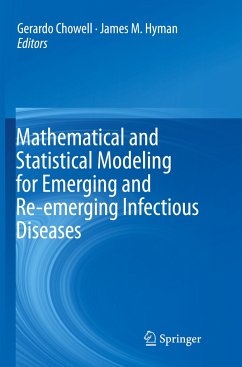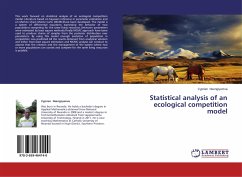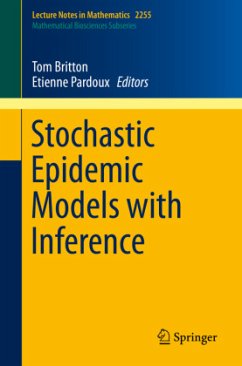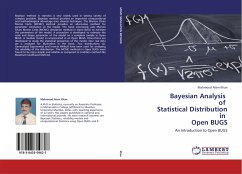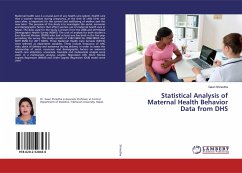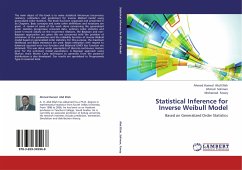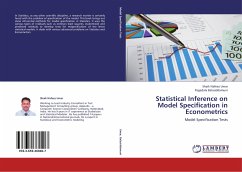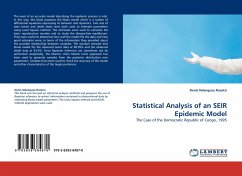
Statistical Analysis of an SEIR Epidemic Model
The Case of the Democratic Republic of Congo, 1995
Versandkostenfrei!
Versandfertig in 6-10 Tagen
32,99 €
inkl. MwSt.

PAYBACK Punkte
16 °P sammeln!
The need of an accurate model describing the epidemic process is vital. In this way, this book proposes the Ebola model which is a system of differential equations expressing its behavior and dynamics. Two sets of data (onset and death data) were both used to estimate parameters using Least Square method. The estimates were used to calculate the basic reproduction number and to study the disease-free equilibrium. They were useful to determine how well the model fits the data and how good estimates were, in terms of the information they provided about the possible relationship between variables...
The need of an accurate model describing the epidemic process is vital. In this way, this book proposes the Ebola model which is a system of differential equations expressing its behavior and dynamics. Two sets of data (onset and death data) were both used to estimate parameters using Least Square method. The estimates were used to calculate the basic reproduction number and to study the disease-free equilibrium. They were useful to determine how well the model fits the data and how good estimates were, in terms of the information they provided about the possible relationship between variables. The solution showed that Ebola model fits the observed onset data at 98.95% and the observed death data at 93.6%. Since Bayesian inference can sometimes not be performed analytically, the Markov chain Monte Carlo approach has been used to generate samples from the posterior distribution over parameters. Samples have been used to check the accuracy of the model and other characteristics of the target posteriors.



